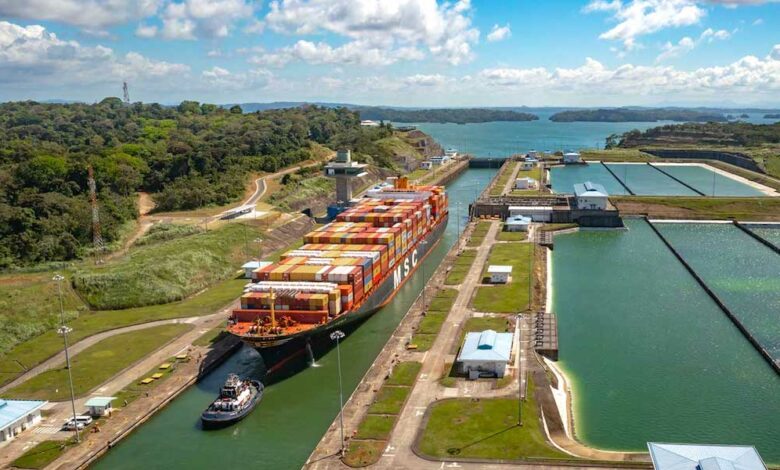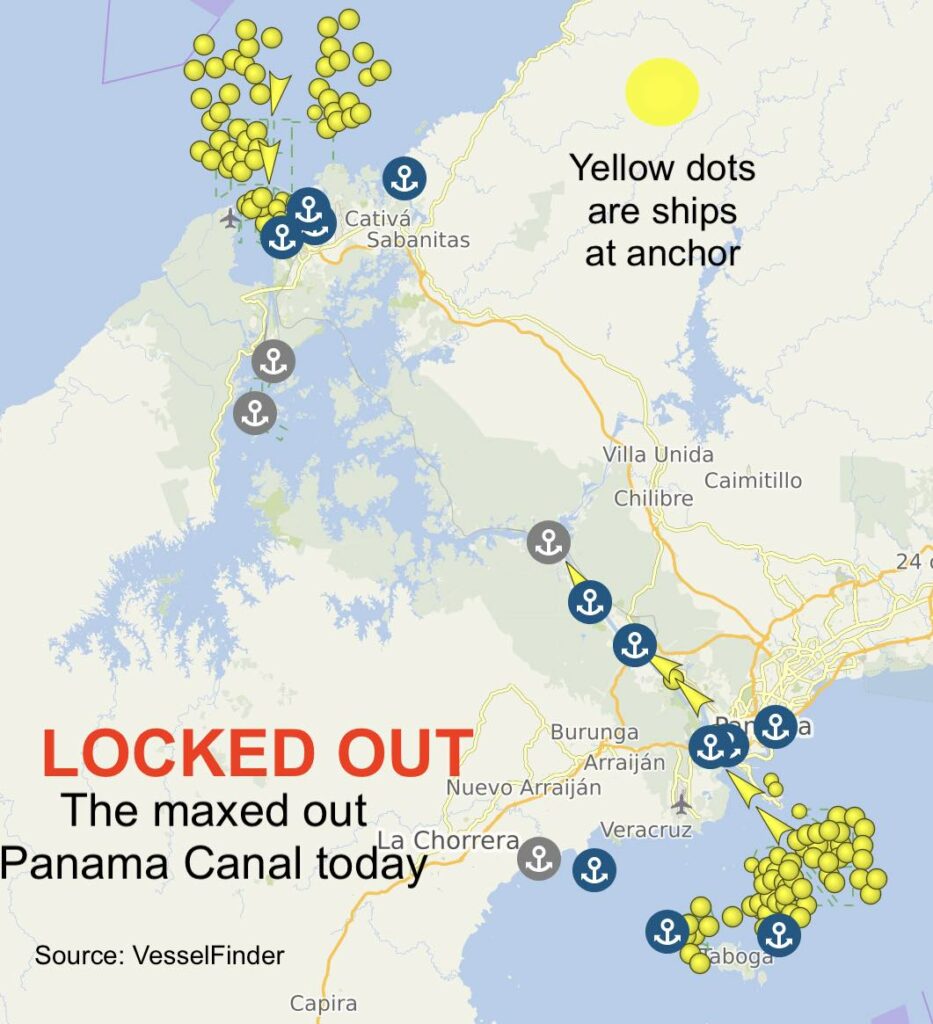Shippers look for alternatives as Panama Canal delays lengthen

Shippers are now actively rearranging Asian shipments, moving back from the US east coast to the west coast, as the full ramifications of the Panama Canal’s prolonged reduced operational capacity hits home.
Facing what it has described as an “unprecedented” drought, the Panama Canal Authority has shaved a couple of metres off its maximum draft for its neopanamax locks whereby ships transiting can only go through the waterway with a 13.41 m depth and the number of daily transits has been slashed by 20% to 32 a day – measures that are expected to be in place into the new year as the El Niño weather phenomenon is likely to bring more dry weather.
Aware of the limitations climate change is bringing to bare on this crucial waterway, the canal’s administrators are looking at alternative ways to get shipments across the country.
“The Canal’s focus on the future is not only limited to addressing current challenges but also includes proactive environmental initiatives. Efforts are being made to safeguard the water basin, preserve forest cover, and explore the possibility of developing a logistics corridor to diversify cargo handling options within the country,” the canal’s administrators stated in a release yesterday.
“We have to find solutions so that we can continue to be a relevant route for international trade. If we don’t adapt, we will die,” canal administrator Ricaurte Vasquez said at a recent press conference.
Cruisegoers were left reeling yesterday with the news that Royal Caribbean’s Rhapsody of the Seas has suddenly decided to axe all its Panama Canal crossings for the 2023 – 2024 winter season, with holidaymakers now forced to book alternative flights. While the cruiseline failed to provide reasons for the sudden cancellation of this popular transit, the growing queues at the canal are thought to have played a part in the decision.
Waiting times for merchant ships have been growing this month, starting out at 15 days on August 1 and have now topped 20 days with a growing backlog of ships waiting at either end of the canal (see map below).
Special auctions are in place for cancelled slots, with very high fees demanded. Liners have reacted by implementing canal transit surcharges of up to $500 per teu.
Data from Denmark’s eeSea shows the average number of boxship transits over the past eight weeks has been 58 per week. Last week it slipped to 55.
“Obviously, if the drought continues, and we only handle, say 55 vessels like last week, the problem will accumulate,” warned eeSea’s founder Simon Sundboell.
Peter Sand, chief analyst at freight rate platform Xeneta, said shippers must now consider their options as Panama congestion is on the rise.
“Playing the spot market too tight may not be the best option right now, as sentiments push transport costs up again every month,” Sand advised.
Andy Lane from Singapore container advisory CTI Consultancy told Splash that backhaul container services can go 2,000 nautical miles further through the Suez Canal or 5,000 nautical miles further around Africa. Some headhaul services can likely be switched also to Suez routings, he suggested.
“It just takes a few weeks of lead-time to be able make such network changes. The backlog is going to take months to clear it would seem, so it would be good for the container carriers to start planning now,” Lane urged.


Why can’t they unload the ship onto the train, and load onto different ship on other side to continue the journey? That way no one has to cross the canal until the situation improves
What are you on? We all want some!
Could millions of dollars be saved and world trade be enhanced by triggering thunderstorms in the Panama Canal region using warm moist air production from biochar on the land? The dark biochar can increase water content of soil and adds enthalpy to the air by absorbing solar energy.
People have been complaining that drought has hit the Panama Canal. One may note that dew point temperatures over about 13 deg C allow convectional rain. Some say that wet bulb temperatures of over 22 deg C indicate possible thunderstorms. Biochar could initiate thunderstorms by increasing air temperatures at near ground levels by absorption of solar energy and by keeping ground moist.
Looking at weather for Panama Canal: Report says temperature is 28 deg C and relative humidity is RH = 88%.
Assuming an atmospheric pressure of 100 kPa gives these results: Dew point temperature of 25.8 deg C, lifted condensation level of 272 m, wet bulb temperature of 26.4 deg C, saturated adiabatic lapse rate of 3.8 deg C per km rise.
Regards, Eddie Miller
No.